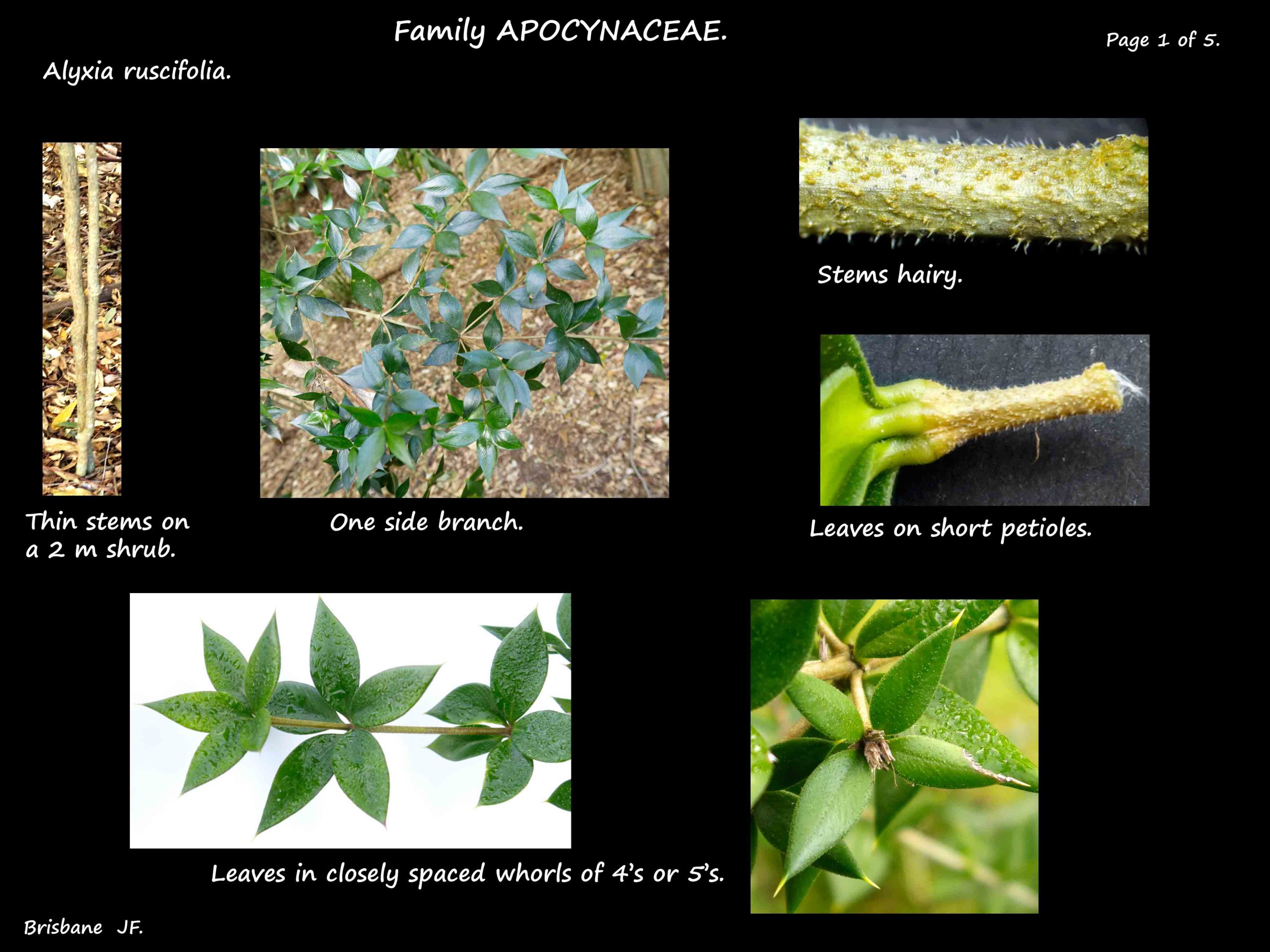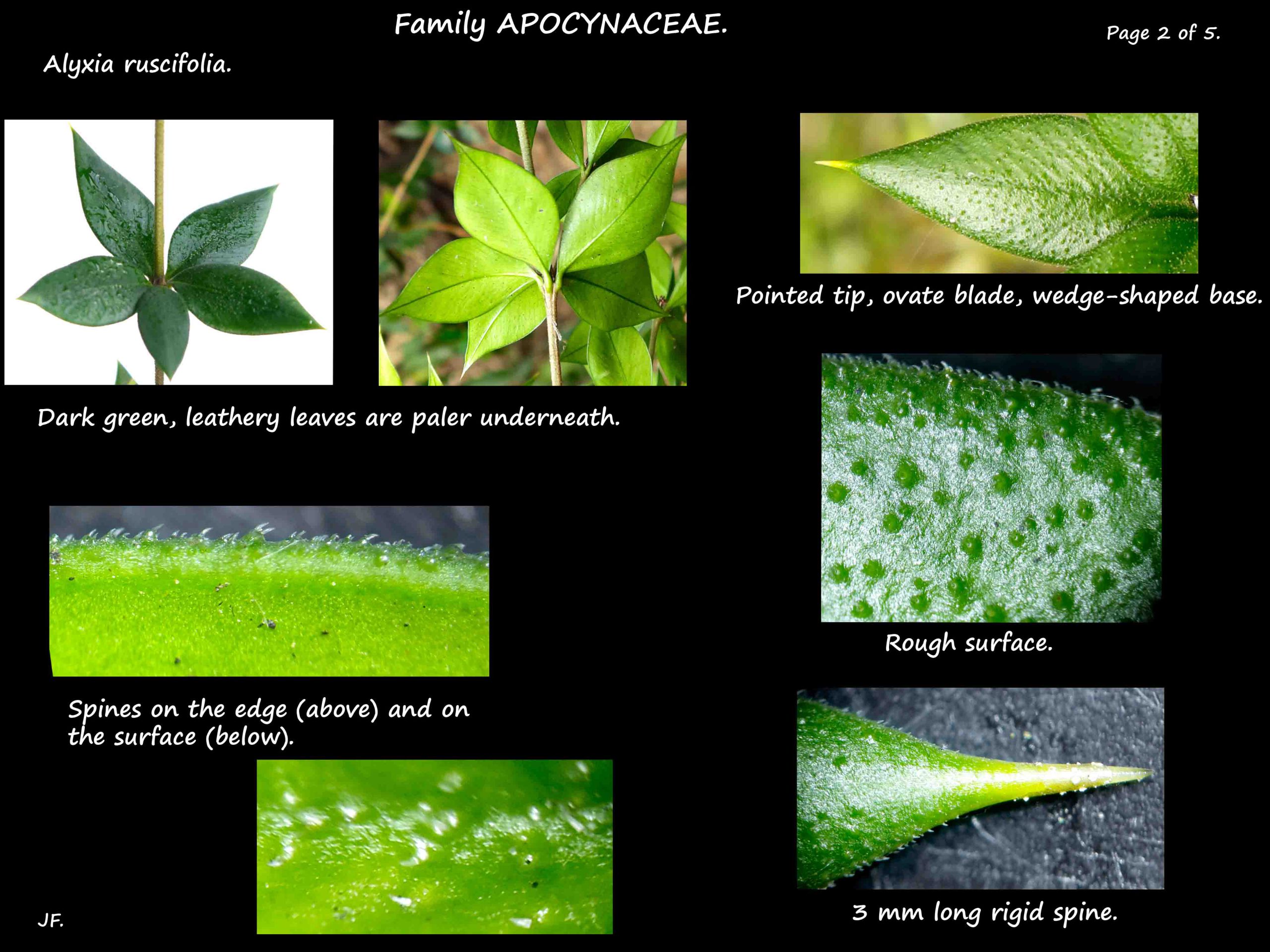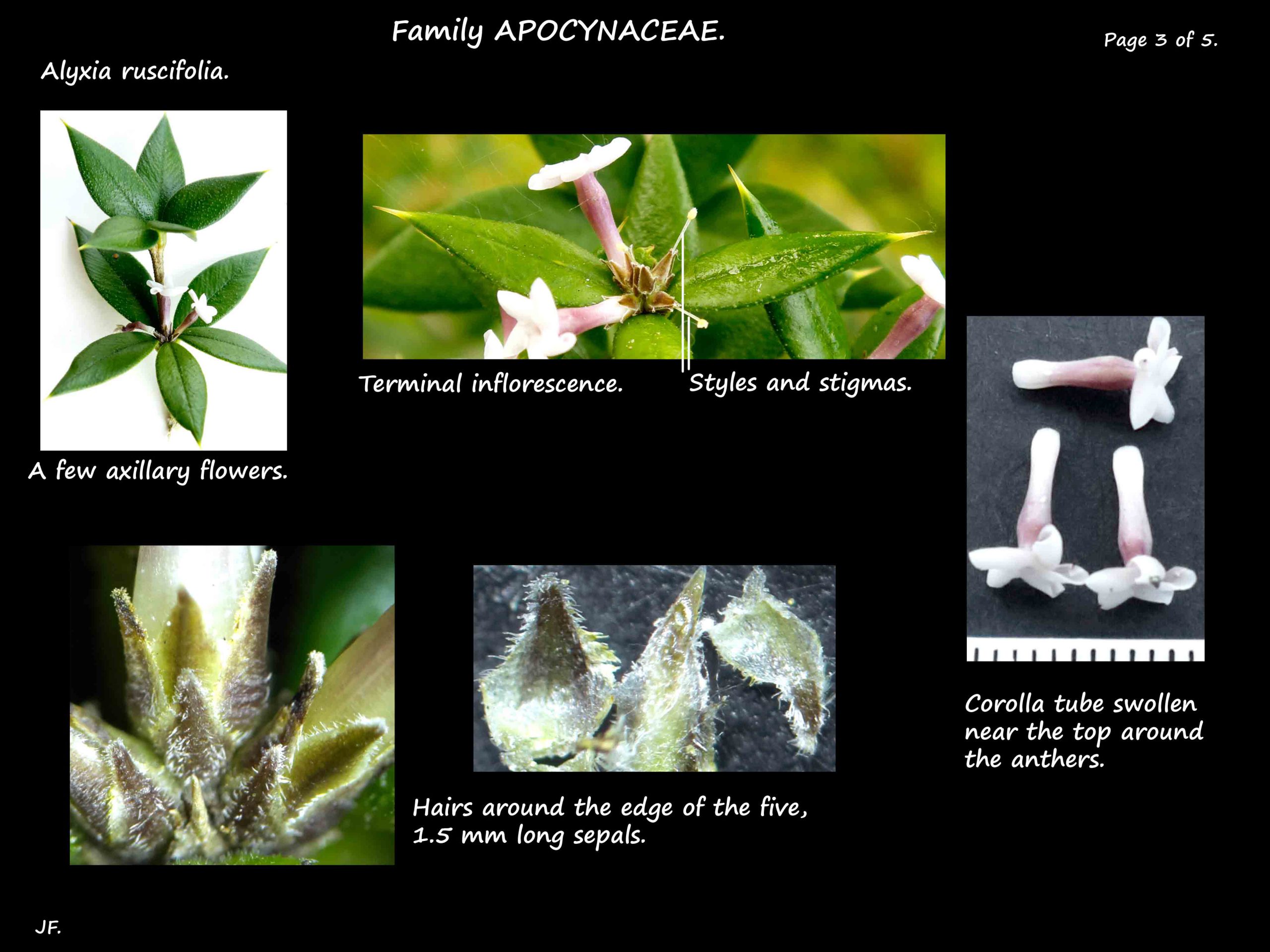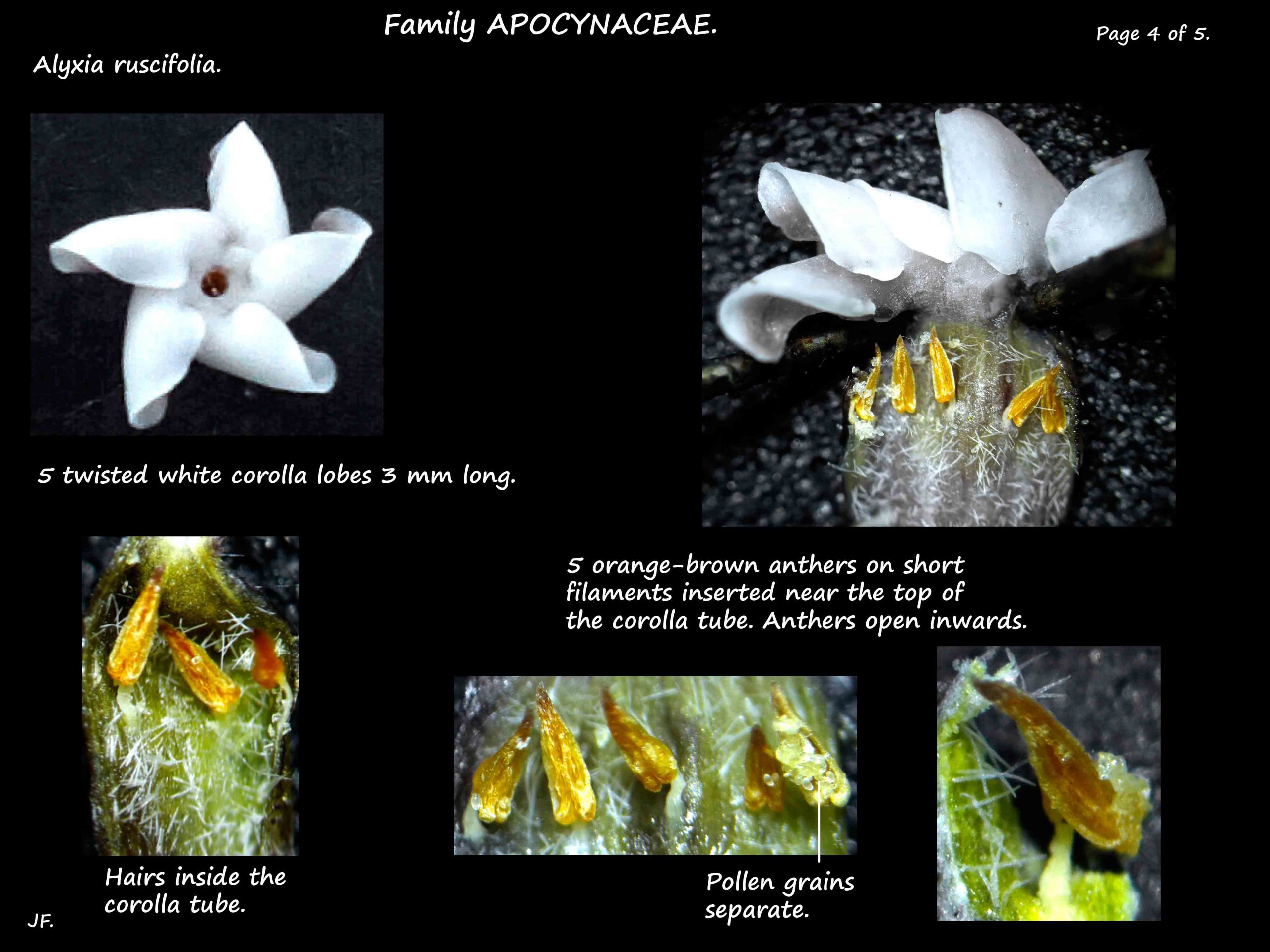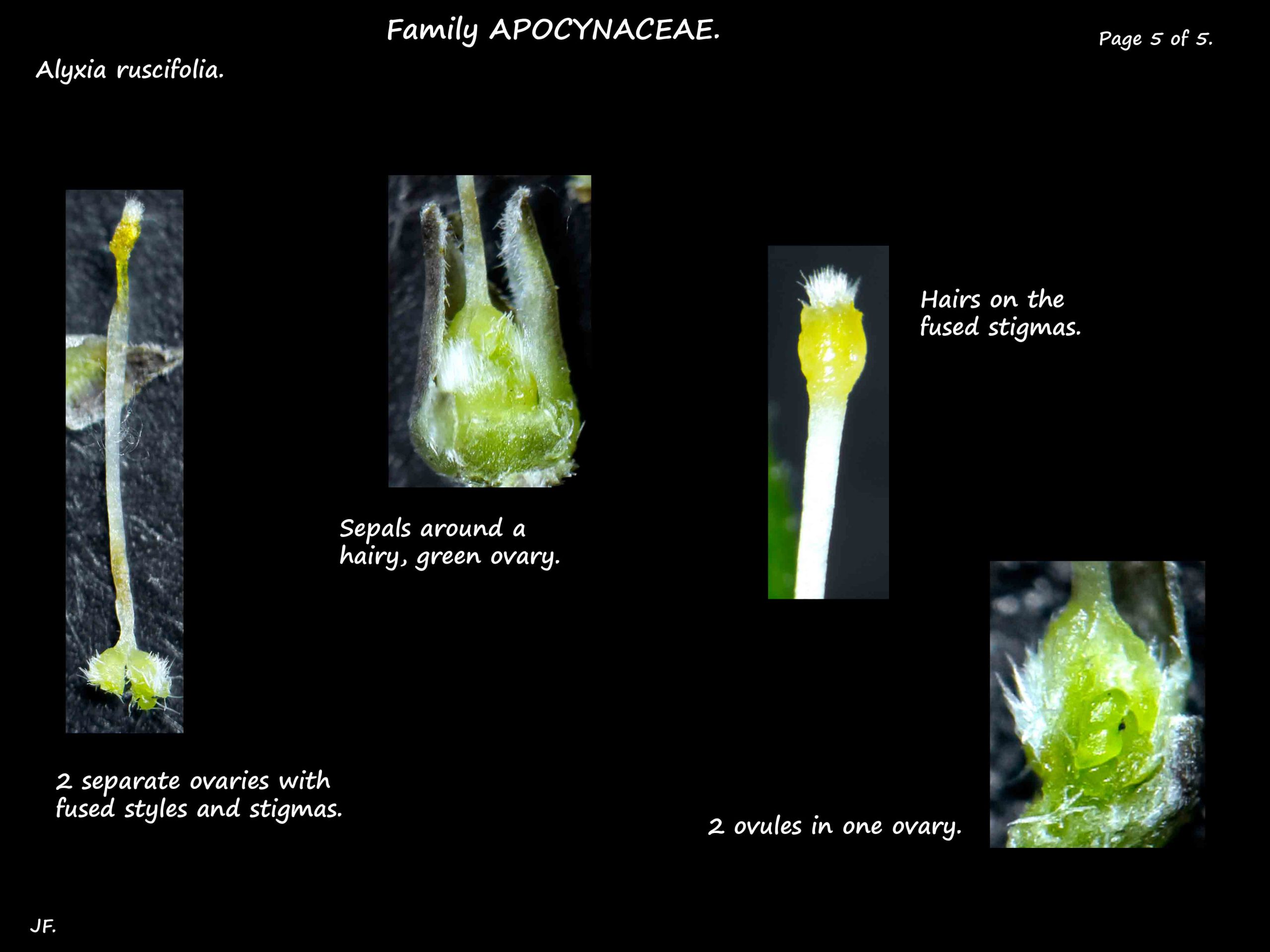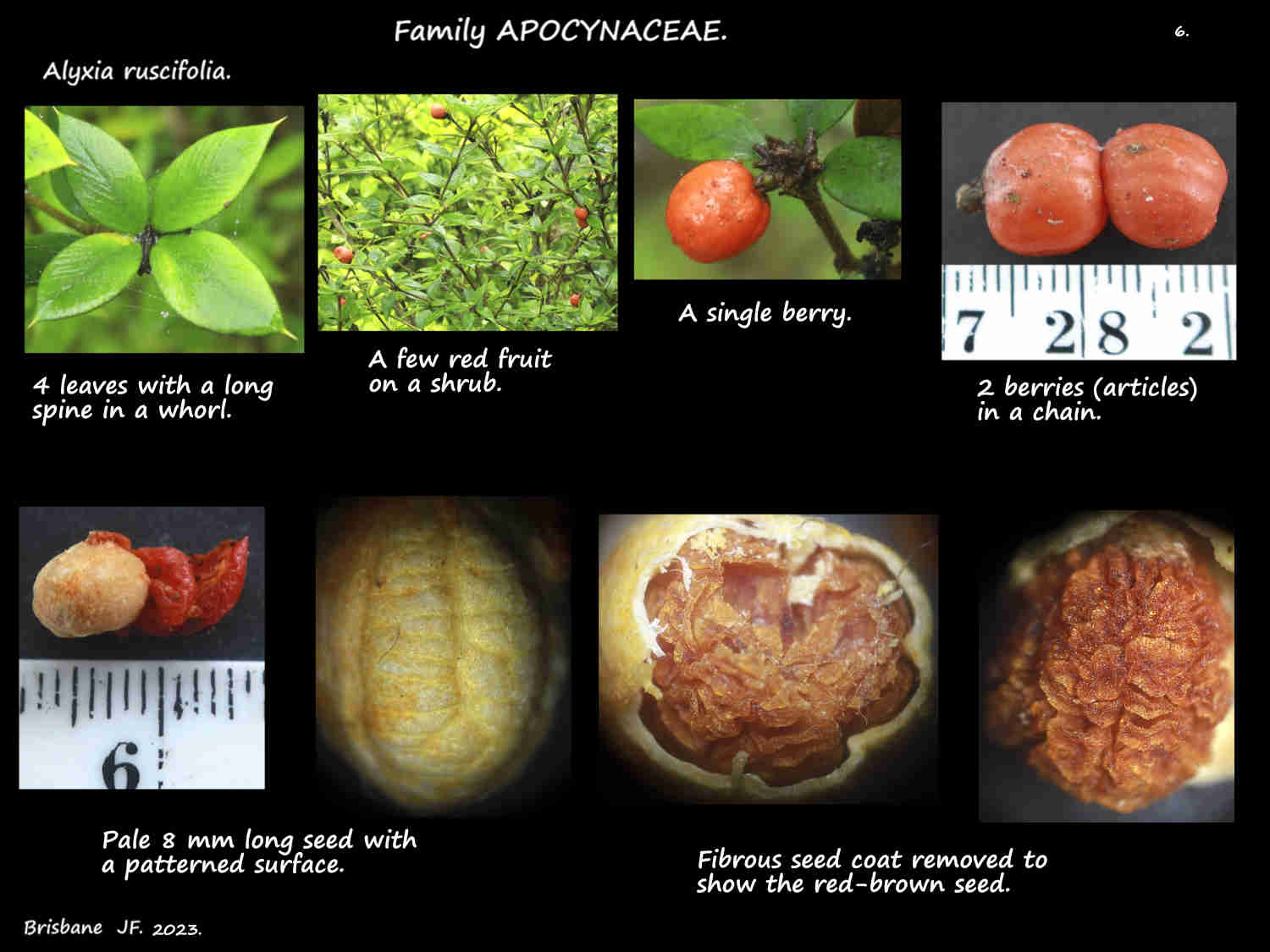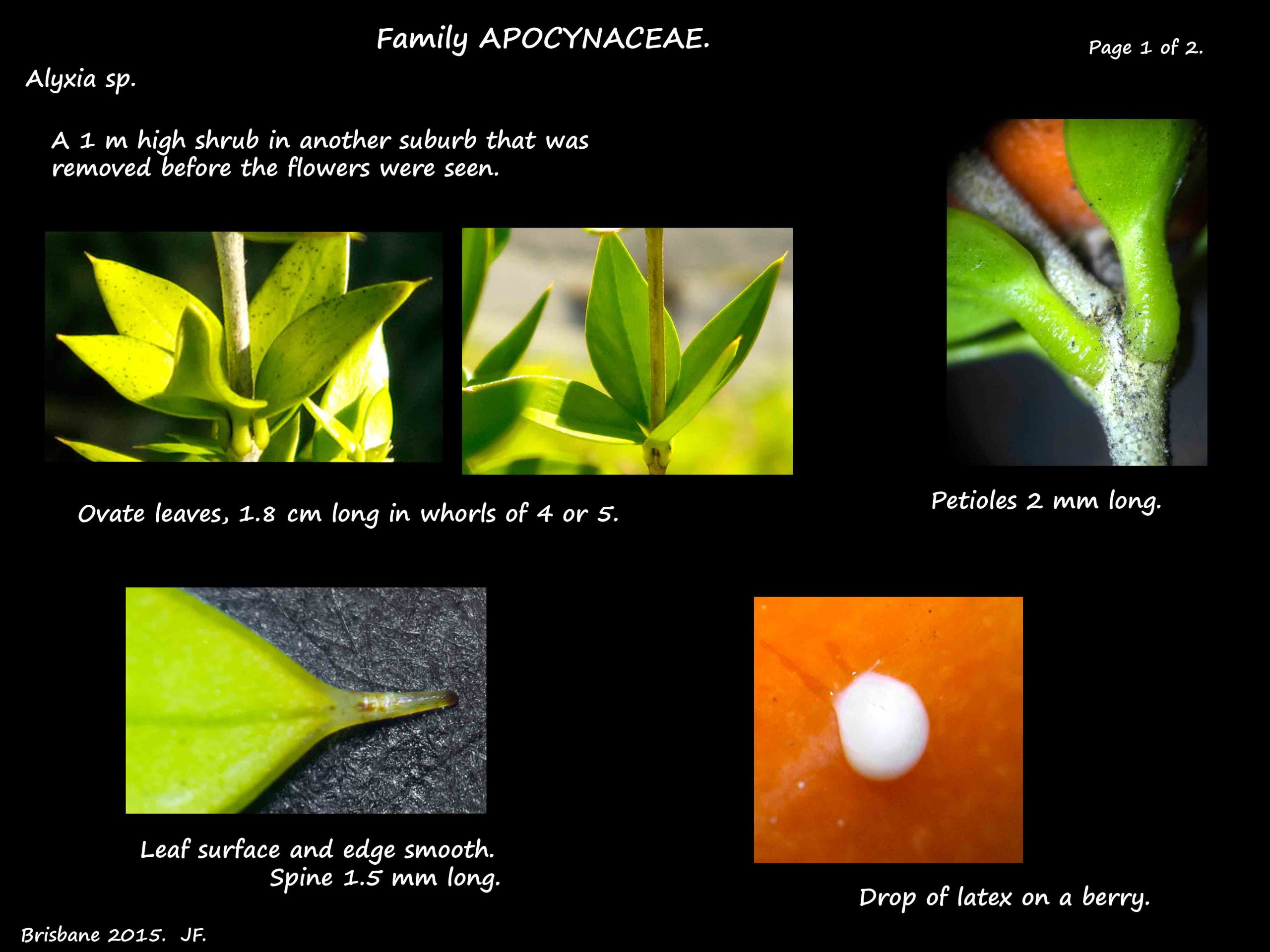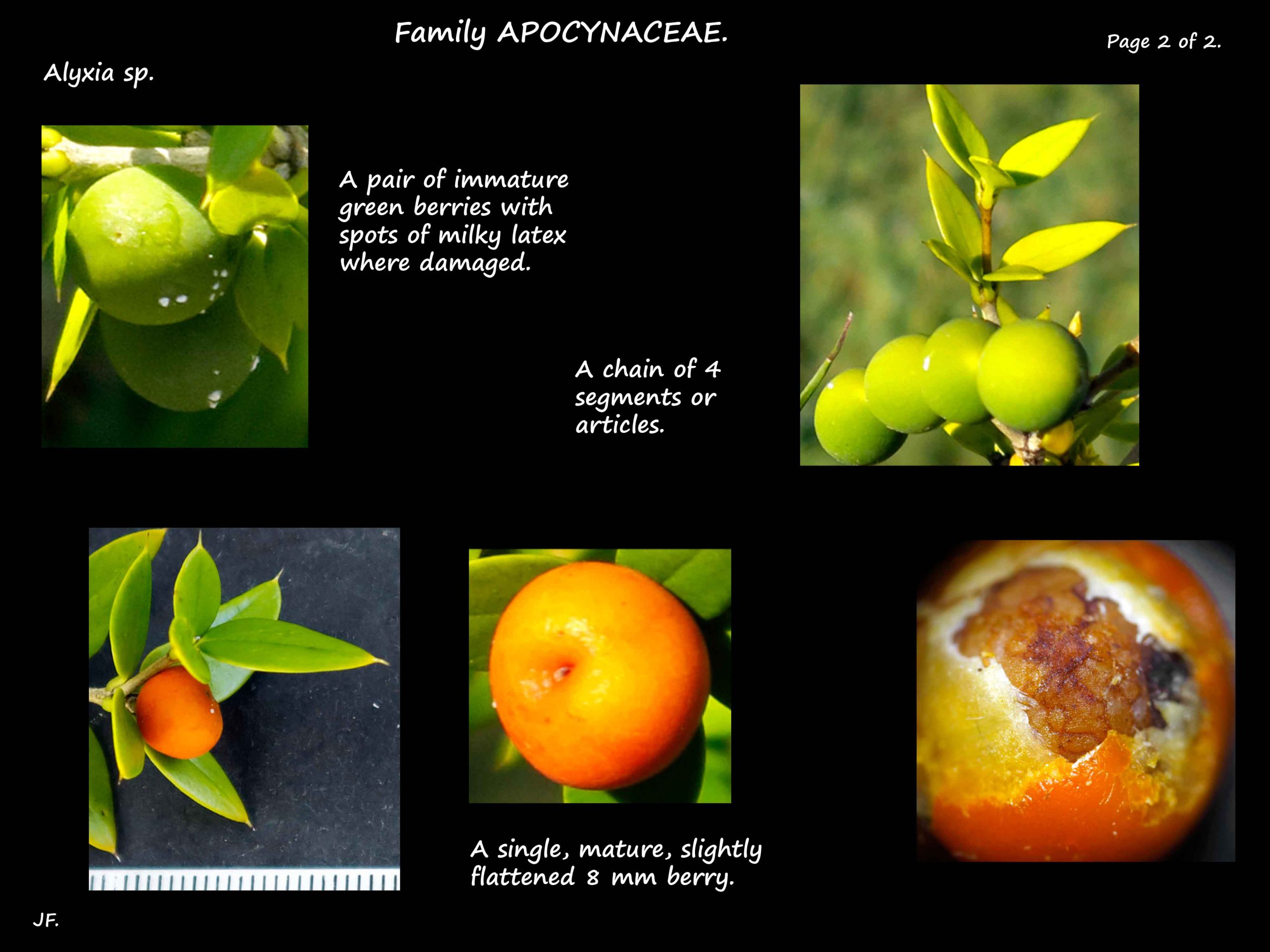Alyxia ruscifolia.
Native Holly, Chain Fruit or Prickly Alyxia is native to Australia and found in the Brisbane area.
Erect shrubs often 1 to 3 m high but they can grow to 6 m.
Parts have a milky exudate.
Leaves, on stalks up to 5 mm long, are in whorls or 4 or 5.
The blades are variable but can be up to 6.5 cm long and 3 cm wide.
They can be lanceolate, narrowly ovate, obovate or elliptic.
The base is wedge-shaped and the tip a rigid point up to 3 mm long.
The edge can be smooth, thick and rough or finely toothed.
The blade surface can be smooth or rough.
(Seedling leaves are toothed and have small tubercles on the upper surface.)
The leathery leaves are dark green above and paler underneath.
The veins can be obvious or indistinct.
Inflorescences are small axillary clusters of scented, cream or white flowers.
Each flower is on a stalk up to 1 mm long with small ovate to lanceolate bracts.
Flowers, with parts in 5’s, are up to 1 cm long.
The sepals, 3 – 5 mm long, have hairs on the edges.
The fused petal bases form a corolla tube around 5 – 10 mm long and 2 mm wide.
The corolla tube is hairy inside and swollen at the stamen insertion area.
The twisted lobes are 2 to 4 mm long.
The stamens, on short filaments, are inserted just under the top of the corolla tube.
The orange to brown anthers are up to 1.5 mm long.
They open inwards via long slits to release the pollen as single grains.
There are 2 carpels with the ovaries free and the styles and stigmas fused.
The ovaries are hairy as is the orange stigma.
The fruit are round to slightly flattened berries that ripen from green to red or orange.
They may be solitary or in chains of a few with each berry called an article or segment.
Three varieties are described.
A. ruscifolia var. ulicina has small leaves with a rough surface in close whorls.
A. ruscifolia var. pugioniformis and A. ruscifolia var. ruscifolia have variously sized leaves with
smooth, shiny surfaces and the edges rolled under.
var. ruscifolia has ovate leaves up to 4 times as long as wide and var. pugioniformis
has narrower leaves 6 to 8 times as long as wide.
J.F.
